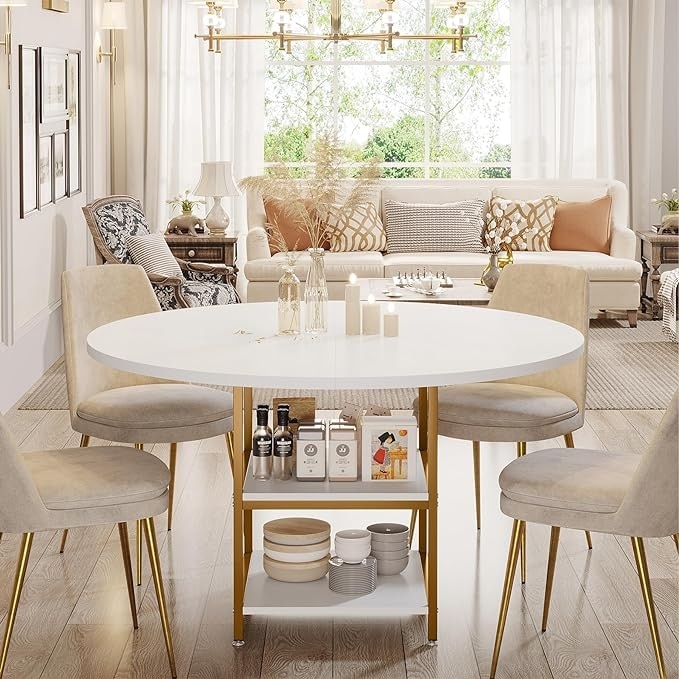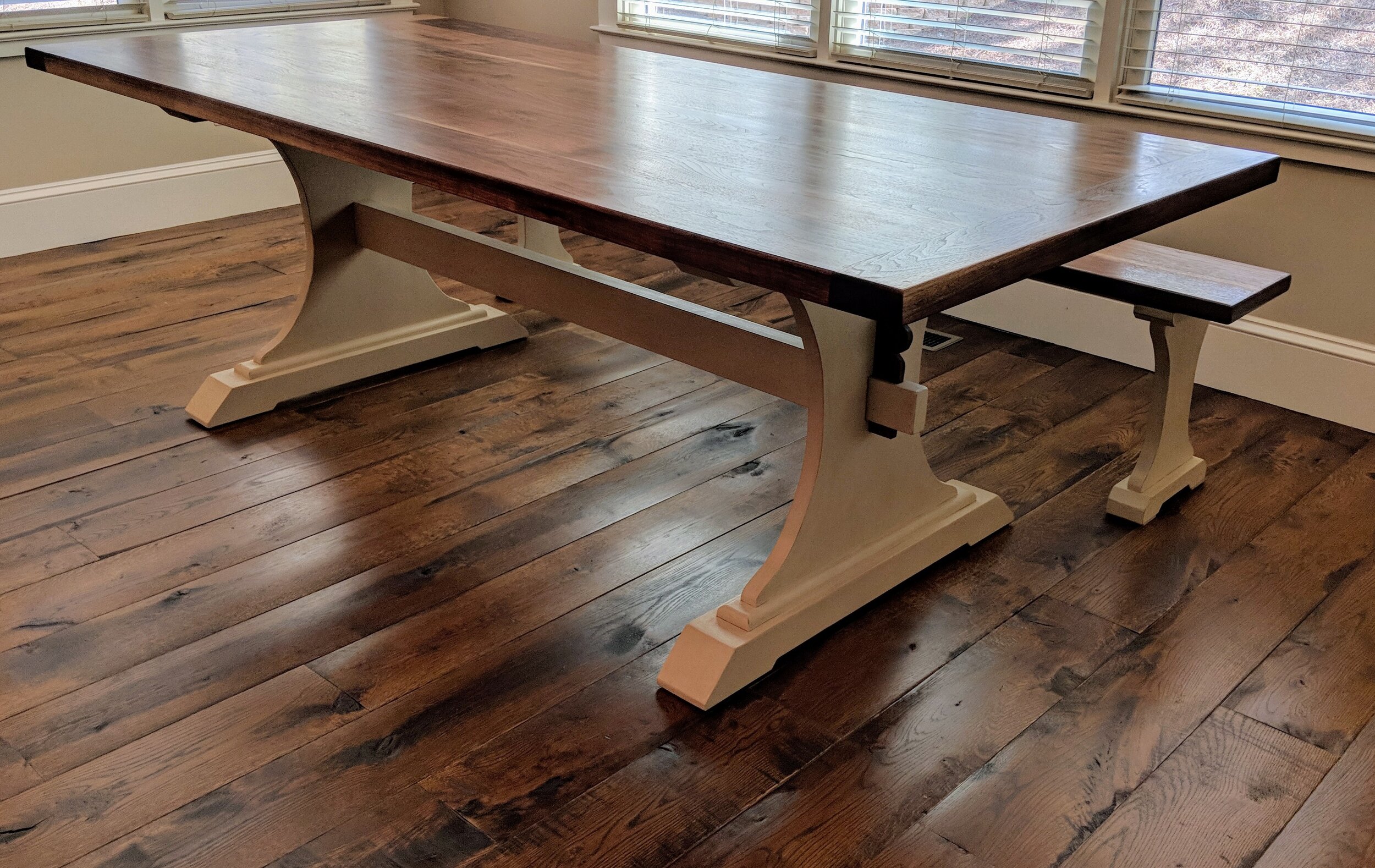From Standard to Modern: Discover the Ideal Eating Space Table Legs for Your Style
While traditional designs such as cabriole and turned legs stimulate a sense of ageless sophistication, modern styles like barrette and geometric options offer a chance for striking aesthetic rate of interest. As you think about these elements, the inquiry stays: how can you effortlessly incorporate these varied leg designs to create a harmonious eating experience?
Understanding Table Leg Styles
The range of dining room table leg styles can significantly influence both the aesthetic appeals and functionality of the area. Each leg design adds distinct useful functions and aesthetic components, catering to diverse design choices and usage requirements. Comprehending these designs is essential for choosing the best table that aligns with your general interior layout vision.
For example, conical legs use a clean, classic appearance that can improve a space's sophistication, while pedestal bases supply stability and make best use of legroom, making them suitable for smaller spaces. Barrette legs, a trademark of mid-century modern layout, introduce an industrial panache, enabling a ventilated, open feeling. Trestle legs stimulate rustic charm, giving robust assistance and a feeling of timelessness.
Furthermore, the choice of products plays a significant duty. Wood legs can bring heat and texture, whereas metal options frequently share a streamlined, contemporary ambiance. Eventually, comprehending table leg designs is vital for creating a natural dining area that mirrors personal style while ensuring practicality and comfort. By thoughtfully taking into consideration these aspects, you can improve both the functional and aesthetic allure of your eating room.
Traditional Table Leg Options
When picking dining space table legs, typical options commonly embody ageless style and craftsmanship. These styles show an abundant heritage and a commitment to high quality, making them suitable for those that value classic aesthetics.
One of the most renowned conventional leg styles is the cabriole leg, identified by its elegant bent form. This layout often features ornamental carvings and is most typically discovered in Queen Anne and Chippendale furniture. Another prominent choice is the turned leg, which boasts a series of smooth, rounded forms that give a timeless appearance while keeping security.
Additionally, the straight leg, while simple, provides a durable and unadorned framework that can mix effortlessly with a range of tabletop styles. For those drawn to ornate outlining, claw-and-ball feet legs evoke a sense of majesty and can offer as a magnificent prime focus in any type of eating area.
Lastly, stand bases, although not purely legs, give an alternative traditional alternative that enables ample legroom and can be wonderfully carved. Each of these typical leg designs adds to the total setting of a dining-room, weding function with visual charm.

Modern Table Leg Layouts
Modern table leg designs offer a varied variety of designs that emphasize tidy lines and innovative products. These layouts typically prioritize capability while serving as striking centerpieces within a dining room. Minimalist aesthetics are common, with legs crafted from materials such as metal, glass, and crafted wood, which add to a modern and airy feeling.
One prominent layout is the barrette leg, defined by its slim, conical structure that gives stability without frustrating the table top (dining room table legs). This design is commonly discovered in mid-century modern furniture and can effortlessly complement numerous eating table shapes. Another fad is the use of geometric shapes, where legs may take on asymmetrical or angular types, adding visual passion and a touch of artistry

Mixing Designs for Unique Spaces
Frequently, homeowners look for to create special eating spaces that reflect their individual design by blending various design aspects. This approach permits the incorporation of varied appearances, resulting in an unified yet distinctive environment. For instance, combining a rustic wooden table with sleek, modern metal legs can create a captivating contrast that elevates the area's overall allure.
In addition, integrating vintage table legs with contemporary table tops can evoke a sense of history while maintaining a modern sensibility. Such mixes not just display private preference yet likewise motivate imagination, permitting property owners to curate a space that really feels both personal and inviting.
Color plays anonymous a critical function in this blending process; choosing table legs that enhance or contrast with the existing shade scheme can boost aesthetic passion. For instance, whitewashed legs can soften the daring of a dark table surface area, producing a balanced visual.
Tips for Selecting the Right Legs
Choosing the right table legs is important for accomplishing both performance and aesthetic allure in your eating room. Begin by considering the overall design of your area. Traditional setups gain from legs that include elaborate makings or turned designs, while modern spaces might call for sleek, minimalist styles.
Following, evaluate the elevation and stability of the legs. dining room table legs. Standard table vary between 28 to 30 inches in height, so make sure the legs match this dimension for convenience. Additionally, robust materials, such as hardwood or metal, can improve security and long life
Review the leg form as well-- options include right, tapered, or stand styles. Straight legs provide a read what he said classic appearance, while tapered legs can add a touch of beauty. Pedestal bases supply adequate legroom and are perfect for smaller areas.
Final Thought
In summary, selecting the ideal dining space table legs calls for cautious factor to look at these guys consider of both modern and standard designs. By balancing leg style, elevation, and material with the overall decor, a cohesive and welcoming environment can be achieved.
The selection of dining area table leg styles can substantially influence both the visual appeals and capability of the area. Ultimately, recognizing table leg designs is crucial for producing a natural dining location that reflects individual design while guaranteeing usefulness and comfort.One of the most legendary conventional leg designs is the cabriole leg, defined by its graceful bent shape. Straight legs use a classic look, while conical legs can add a touch of style.In summary, choosing the ideal eating area table legs needs mindful consideration of both standard and modern designs.